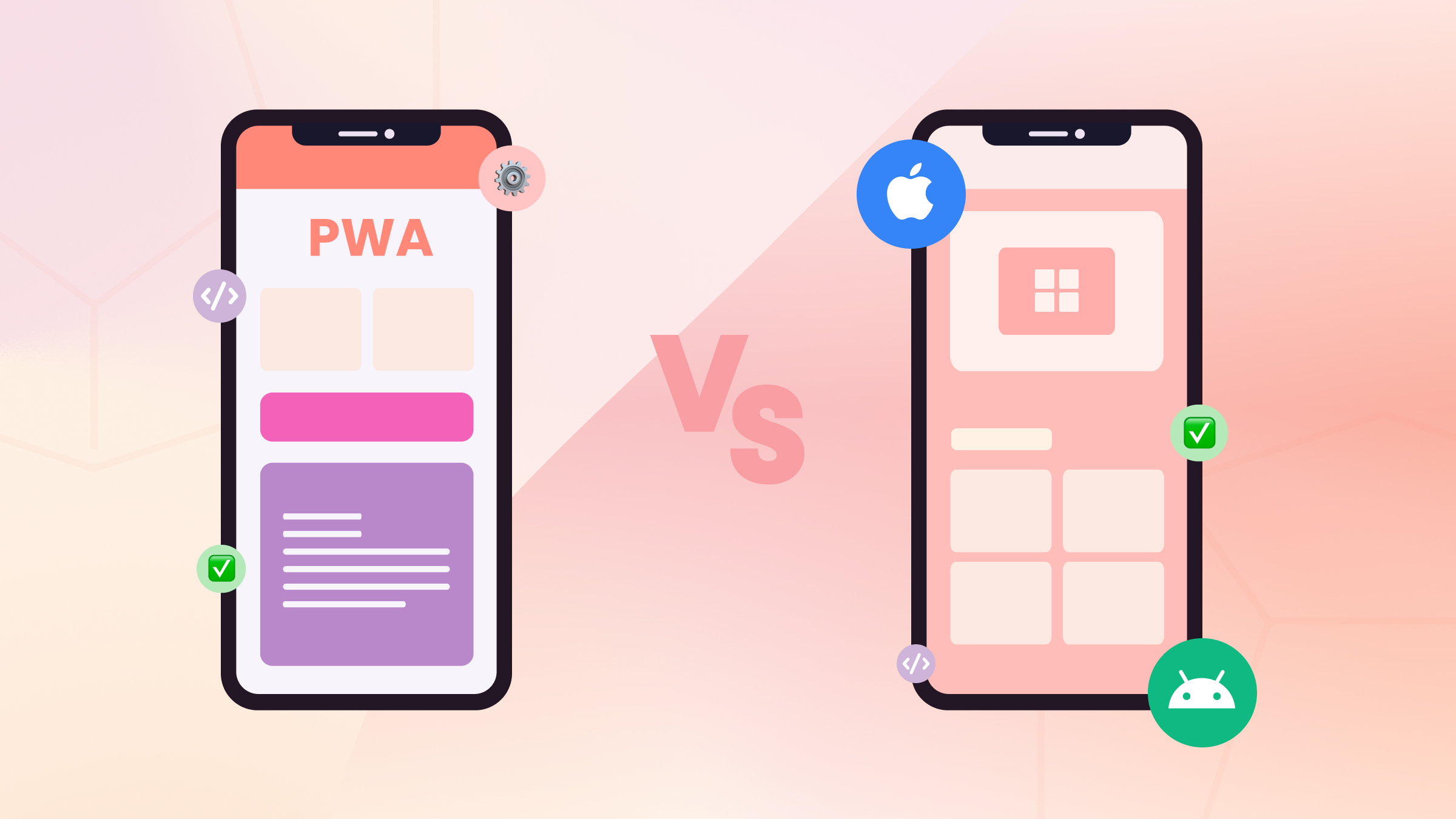PWA vs. Native Apps: What’s Best for the Product?
When building a digital product, one of the first decisions is choosing the right platform. Should you invest in a Progressive Web App (PWA) or go with a native mobile app? Both approaches have strengths and weaknesses, and the right choice depends on your product goals, budget, and audience.
1. Speed to Market & MVP Validation
- PWAs: Faster to develop because they rely on standard web technologies (HTML, CSS, JavaScript). Perfect for Minimum Viable Products (MVPs) where the goal is to test an idea quickly and cost-effectively.
- Native Apps: Development takes longer, especially if you need apps for both iOS and Android. Great for products where user experience and platform-specific features are critical from day one.
Winner: PWA for MVPs, Native for fully polished launches.
2. User Reach & Accessibility
- PWAs: Accessible directly through a browser, no app store downloads required. They work across devices and operating systems, making it easy to reach a wider audience instantly.
- Native Apps: Require app store downloads and updates, which can limit adoption. However, app stores also provide discovery benefits through rankings and categories.
Winner: PWA for frictionless reach, Native if app store visibility is a key growth channel.
3. Experience Depth & Performance
- PWAs: Offer offline support, push notifications, and responsive design. However, they may not match native apps in areas like high-end graphics, deep hardware integrations (e.g., advanced camera use, AR/VR), or ultra-smooth animations.
- Native Apps: Provide full access to device features and hardware, allowing for highly optimized performance and richer experiences.
Winner: Native for advanced experiences, PWA for standard apps that prioritize speed and accessibility.
4. Maintenance & Updates
- PWAs: Updates are instant. No need for users to download a new version—everyone always sees the latest release.
- Native Apps: Updates must go through app stores and require users to install them. This can cause delays and fragmentation across different app versions.
Winner: PWA, hands down.
5. Business Costs & Strategy
- PWAs: Cheaper to build and maintain, since one codebase works everywhere. Ideal for startups and businesses looking to maximize ROI.
- Native Apps: Higher development and maintenance costs, especially if you support multiple platforms. However, the investment may be justified if you need top-tier performance and deeper engagement features.
Winner: Depends on your budget and long-term vision.
So, What’s Best for the Product?
There’s no one-size-fits-all answer. If your priority is speed, cost savings, and broad accessibility, PWAs are a powerful choice. If your product requires deep device integration, advanced performance, or app store distribution, native apps may be the way to go.
At 10 Grounds, we help companies evaluate the best technology for their digital products, whether it’s PWA, native, or a combination of both. Explore our software development services to see how we can help you choose the right path for your product.
If you want to read more about PWAs and their advantages, check out our post on The Pros and Cons of Progressive Web Apps (PWAs) in 2025.



